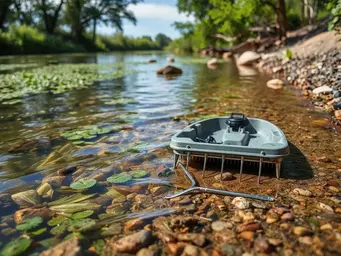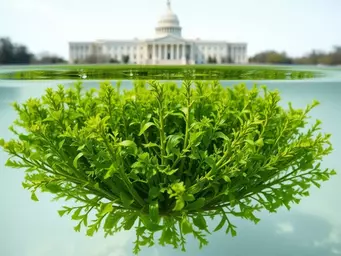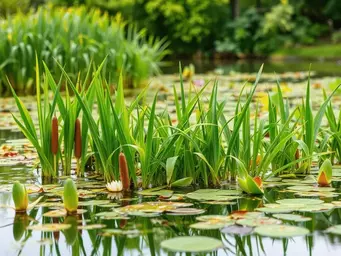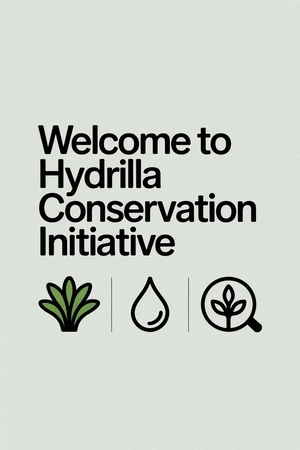Did you know that hydrilla can grow up to one inch per day? This invasive aquatic plant is reshaping our waterways and demanding immediate attention from environmental professionals and policymakers alike. Here’s what you’ll discover about this formidable invader and its implications on water policy.
What You Will Learn
- Hydrilla poses a significant threat to biodiversity and ecosystem health, making immediate action crucial.
- Effective management of hydrilla requires collaboration among governments, scientists, and community members.
- Integrating climate change considerations into water policies is essential for sustainable management practices.
- Ongoing monitoring and research are vital for adapting strategies to combat hydrilla effectively.
Hydrilla's Threat: A Snapshot of Impact and Response
This visual summarizes key characteristics that make Hydrilla an invasive threat and the strategic pillars for its effective management, highlighting the need for coordinated action.
Threatening Characteristics of Hydrilla
- ✓
Rapid Growth: Up to 1 inch/day, outcompetes native species.
- ✓
Resilience: Survives low-light & varying water quality.
- ✓
Fragmentation: Each piece can form a new plant, leading to rapid spread.
- ✓
Seed Production: Contributes to further proliferation in some regions.
Strategies for Hydrilla Management
- ●
Policy Integration: Incorporate climate change into water management plans.
- ●
Community Engagement: Citizen science, cleanup events, advocacy.
- ●
Monitoring & Research: Long-term tracking, innovative control methods.
- ●
Impact Assessments: Environmental impact assessments guide policy.
The Global Significance of Invasive Hydrilla and Its Impact on Water Policy
In our quest to understand the complexities of aquatic ecosystems, we encounter a formidable invader: hydrilla (Hydrilla verticillata). This invasive plant has become a significant concern not only for local environments but also for global water policy. It’s surprising to think that a single species can ripple through the fabric of water management strategies across various regions! So, let’s explore the implications of hydrilla on our waterways and the policies that govern them.
Understanding Invasive Hydrilla: An Overview of Hydrilla verticillata
Hydrilla verticillata is a submerged aquatic plant that thrives in a variety of freshwater environments. Originally from Africa and Asia, this tenacious species was introduced to the United States in the 1960s. Since then, hydrilla has spread rapidly across many lakes, rivers, and wetlands. Did you know that it can grow up to an astonishing one inch per day under favorable conditions? This remarkable growth rate is just one of the reasons why hydrilla poses a serious threat to our native ecosystems.
- Origin: Native to Africa and Asia.
- Introduction: Brought to the U.S. in the 1960s.
- Growth Rate: Can grow up to one inch per day.
Understanding the biology of hydrilla is crucial for anyone involved in environmental conservation. Not only does this plant grow quickly, but it can also reproduce through fragments of its stems, making eradication efforts especially challenging. Each piece can form a new plant, leading to explosive population growth! For more detailed information on its management, you can refer to resources like the US Army Corps of Engineers Hydrilla Management Plan.
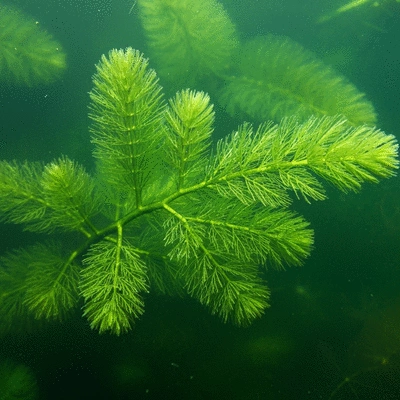
Key Characteristics That Make Hydrilla a Threatening Invasive Species
Several characteristics make hydrilla particularly invasive and destructive:
- Rapid Growth: Hydrilla can quickly outcompete native species, leading to monocultures.
- Resilience: This plant can survive in both low-light conditions and varying water quality.
- Fragmentation: Each fragment can root and grow into a new plant, facilitating its spread.
- Seed Production: In some regions, hydrilla can produce seeds that contribute to its spread.
These traits not only threaten native biodiversity but also complicate management efforts. At the Hydrilla Conservation Initiative, we aim to educate professionals and community members on the importance of early detection and intervention in controlling hydrilla's spread. The Rhode Island Department of Environmental Management offers insights into hydrilla's characteristics and local management efforts, which underscore the challenges posed by its invasive nature.
Ecological Disruptions Caused by Hydrilla in Aquatic Ecosystems
As we delve deeper into the impacts of hydrilla, it becomes clear that this invasive species causes significant ecological disruptions. The changes it brings to aquatic ecosystems affect everything from native plants to fish populations. Let’s explore the breadth of these disruptions and how they affect the overall health of our waterways.
Did You Know?
Invasive species like hydrilla can significantly impact local economies. A recent study found that the economic costs of managing invasive aquatic plants can exceed $20 billion annually in the United States alone!
Frequently Asked Questions About Hydrilla and Water Policy
- Q: What is hydrilla and why is it a concern?
- A: Hydrilla (Hydrilla verticillata) is an invasive aquatic plant native to Africa and Asia. It is a concern because of its rapid growth rate (up to one inch per day), resilience, and ability to reproduce through fragmentation, which allows it to quickly outcompete native species and disrupt aquatic ecosystems.
- Q: How does hydrilla spread?
- A: Hydrilla primarily spreads through fragmentation, where even small pieces of its stems can root and grow into new plants. In some regions, it can also produce seeds, further contributing to its proliferation.
- Q: Why is community involvement important in hydrilla management?
- A: Community involvement is crucial because it fosters a sense of ownership and responsibility. Local stakeholders can participate in cleanup events, contribute data through citizen science programs, advocate for policy measures, and attend educational workshops, all of which enhance management efforts.
- Q: How does climate change affect hydrilla management?
- A: Climate change can influence hydrilla's distribution and growth by altering water temperatures and levels, potentially creating more favorable habitats for its proliferation. Integrating climate projections into water management plans is essential for developing adaptive and proactive strategies.
- Q: What role do environmental impact assessments (EIAs) play in managing hydrilla?
- A: EIAs are vital tools for evaluating potential ecological consequences of hydrilla invasions and proposed management strategies. They help stakeholders make informed decisions that prioritize both conservation and the needs of affected communities, guiding effective policy implementation.
Looking Ahead: Future Directions in Hydrilla Management and Water Policy
As we navigate the increasing challenges posed by invasive hydrilla, it's essential to consider how we can move forward with effective management strategies and informed water policies. The future of our waterways relies on integrating climate change considerations into our framework. As environmental conditions shift, we must adapt our approaches to ensure the resilience of aquatic ecosystems.
Climate change not only affects water temperatures and levels but also influences the distribution and proliferation of hydrilla. By understanding these connections, we can better anticipate changes and formulate actionable policies. For instance, rising temperatures may create more conducive habitats for hydrilla's growth, prompting a need for proactive measures. The US Army Corps of Engineers' environmental assessment for hydrilla management in the Connecticut River highlights the complex environmental factors involved.
Integrating Climate Change Considerations into Water Policy
Addressing the impacts of climate change on hydrilla management requires a thorough understanding of the interplay between ecosystem health and environmental changes. Here are some strategies to incorporate:
- Implementing adaptive management practices that respond to changing ecological conditions.
- Incorporating climate projections into long-term water management plans.
- Collaborating with climate scientists to enhance our predictive capabilities.
- Developing educational programs that raise awareness about the link between climate change and invasive species.
By embracing these strategies, we can create a more responsive and resilient water policy framework that supports our efforts in combating hydrilla.

The Role of Community Involvement in Hydrilla Management Efforts
Community engagement plays a pivotal role in the success of hydrilla management initiatives. Empowering local stakeholders fosters a sense of ownership and responsibility toward preserving our aquatic ecosystems. Here’s how communities can get involved:
- Participating in local cleanup events to physically remove hydrilla from waterways.
- Sharing observations and data on hydrilla growth patterns through citizen science programs.
- Collaborating with local governments to advocate for effective policy measures.
- Engaging in educational workshops to understand the ecological impacts of hydrilla.
At the Hydrilla Conservation Initiative, we believe that every community member has a vital role in the fight against invasive species. Together, we can foster a collaborative spirit that promotes ecological stewardship.
Monitoring Programs and Ecological Research for Sustainable Practices
Robust monitoring programs and ongoing research are key to developing sustainable practices in hydrilla management. By investing in scientific inquiry, we can uncover new insights and improve our tactics. Consider the following approaches:
- Establishing long-term ecological monitoring sites to track hydrilla's spread and impacts.
- Funding research projects focused on innovative control methods and native species recovery.
- Collaborating with academic institutions to analyze ecological data and develop best practices.
- Utilizing technology, such as remote sensing, to map hydrilla infestations accurately.
By prioritizing these monitoring and research initiatives, we can enhance our understanding and effectively manage hydrilla, ensuring the health of our waterways for future generations.
Summary of Hydrilla’s Impact and Importance of Policy Action
As we wrap up this discussion on hydrilla management, it’s clear that addressing this invasive species requires coordinated global efforts. The impacts of hydrilla extend beyond ecological disruptions; they influence economic stability, recreational activities, and community well-being. Recognizing these connections is crucial for informed policymaking.
Key Takeaways on the Need for Coordinated Global Efforts
In summary, here are the key takeaways regarding the urgency of coordinated global responses to hydrilla:
- Hydrilla threatens biodiversity and ecosystem health, necessitating immediate action.
- Effective management requires collaboration between governments, scientists, and communities.
- Integrating climate change considerations into policies is essential for sustainable approaches.
- Ongoing monitoring and research are vital for adapting to evolving challenges.
Encouraging Policy Reform and Awareness for Sustainable Water Management
To foster sustainable water management practices, we must advocate for policy reform that addresses invasive species challenges holistically. Creating awareness within communities about the issues posed by hydrilla will encourage more proactive involvement in management efforts. Let’s work together to raise the volume of this critical conversation!
Environmental Impact Assessments as Tools for Effective Policy Implementation
Environmental impact assessments (EIAs) serve as invaluable tools in formulating effective policy responses to hydrilla invasions. By evaluating potential ecological consequences, stakeholders can make informed decisions that prioritize both conservation and community needs. We must leverage these assessments to guide our strategies and ensure we’re safeguarding our precious waterways.
At the Hydrilla Conservation Initiative, I’m excited to continue this journey with you all! By combining community action, research, and strategic policy, we can reclaim our ecosystems and foster a brighter future for our waterways.
Recap of Key Points
Here is a quick recap of the important points discussed in the article:
- Hydrilla is an invasive aquatic plant that can grow up to one inch per day, threatening native ecosystems.
- Key characteristics of hydrilla include rapid growth, resilience in varying conditions, and fragmentation, which complicate eradication efforts.
- Effective management requires collaboration between governments, scientists, and communities, alongside the integration of climate change considerations into water policies.
- Community involvement in monitoring and management initiatives is essential to combat the spread of hydrilla.
- Ongoing research and monitoring programs are crucial for developing sustainable practices to manage hydrilla effectively.

